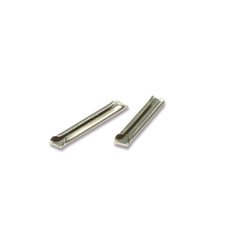When painting natural metal surfaces on a model, it is generally recommended to use a grey or white primer. Grey or...
No products
Product successfully added to your shopping cart
There are 0 items in your cart. There is 1 item in your cart.
Search Tips
Do I need expansion gaps on my railway layout?
It is generally recommended to incorporate expansion gaps or expansion joints into your model railway layout, especially if it is a sizeable or permanent setup. These gaps allow for the natural expansion and contraction of the baseboard material as temperatures and humidity levels fluctuate over time.
Without expansion gaps, the baseboard could buckle, warp or even crack as it expands, potentially causing damage to the track, scenery, and other components. The gaps help prevent such issues by providing a controlled space for the baseboard to expand into.
The size and spacing of the expansion gaps will depend on the size of your layout and the baseboard material used. As a rough guide, gaps of around 3-6mm (1/8 - 1/4 inch) every 1.2-1.8m (4-6 feet) along the length of the baseboard are commonly recommended for layouts using typical wood or chipboard baseboards.
It's advisable to locate the expansion gaps at strategic points, such as where the layout makes a turn, near the legs or risers supporting the baseboard, or between separate sections of the layout. This way, the gaps are less noticeable and can be easily concealed with scenery or by bridging them with removable track sections.
Click here to receive the tips weekly in your mailbox. You can unsubscribe at any time.










